The progress of human civilization have increased rapidly in past 5 centuries, Since we have learnt to harness massive amount of energy through the elements of this earth such as coal, uranium and natural gas. The possibilities of massive accidental disastrous events have also increased in previous 500 years. It’s interesting to note that all of the worst man made disasters took place in the course of modern time period.
Also, since we’re talking about man made disasters, hence excluding environmental disasters like earthquake and floods, but also excluding the potential disaster such as global warming. Disasters that were done purposely such as bombing on Hiroshima and Nagasaki are not going to be included too.
10. Dirty Thirties
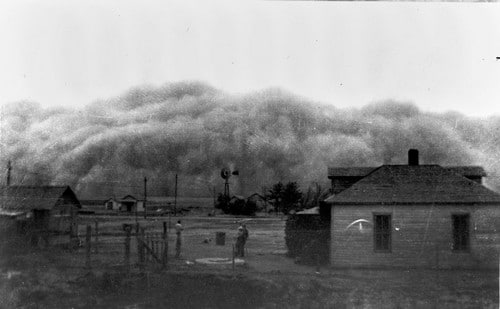
Dirty Thirties also known as dust Bowl was a period of severe dust storms in North America, that significantly damaged the the economy of both U.S.A and Canada during 1930s. Some parts suffered the horrifying conditions for as long as eight years.
The disaster was man made, following a brutal drought, a failure to apply dryland farming methods to prevent wind erosion (the Aeolian processes) caused the phenomenon. Thousands of families abandoned their homes, resulting a large scale migration from one part of the U.S.A to the other, only to find great depression.
Aside from both long-term and short-term disruption of the economy of countries, dust storms certainly caused the medical conditions to people who inhaled the air polluted by dust particles. The disaster is known as one of worst man made disasters of all time.
9. Three Mile Island Accident (1979)
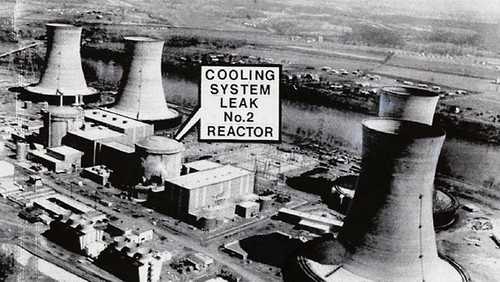
Three mile island accident was a partial nuclear meltdown, in reactor number 2 of Three Mile Island Nuclear Generating Station in Pennsylvania, United States. It is known as one the most significant accident in U.S. commercial nuclear power plant history. The incident was rated a five on the seven-point International Nuclear Event Scale: Accident With Wider Consequences.
The accident worked as a catalyst to increase safety concerns among activists and the general public, resulted in new regulations for the nuclear industry.
Some reports suggested the increase in number Cancer victims after the accident, while epidemiological studies found no link between number of Cancer victims and the accident. A process was required to clean up the whole mess, that lasted from 1979 to 1993 with the cost of more than $1 Billion.
8. Exxon Valdez Oil Spill
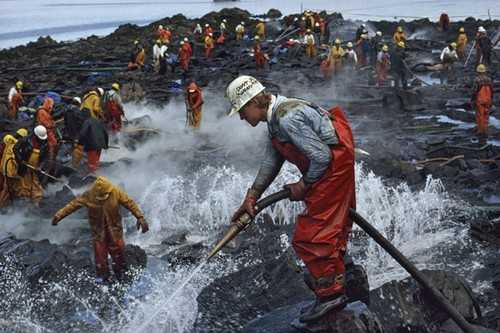
The Exxon Valdez oil spill occurred in Prince William Sound, Alaska, on Good Friday, March 24, 1989, when Exxon Valdez, an oil tanker bound for Long Beach, California, struck Prince William Sound ‘s Bligh Reef at 12:04 am local time, and spilled 11 to 38 million US gallons of crude oil.
It’s known to be one of worst and most devastating man made environmental disasters, and second largest oil spill of all time. The accident was caused due to several mistakes and irresponsible behavior.
Both the long-term and short-term effects of the oil spill have been studied. Oil spill instantly caused the deaths of 100,000 to as many as 250,000 seabirds, at least 2,800 sea otters, approximately 12 river otters , 300 harbor seals, 247 bald eagles, and 22 orcas, and an unknown number of salmon and herring. Thousands of workers got sick during clean up process, and billions of dollars had to spend to clean polluted water.
7. Seveso Disaster
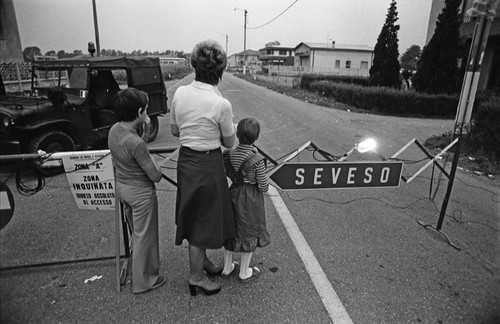
The Seveso disaster was an industrial accident that occurred around 12:37 pm on July 10, 1976, in a small chemical manufacturing plant in Italy. It resulted in the highest known exposure to 2,3,7,8-tetrachlorodibenzo-p-dioxin in the residential area.
The disaster resulted in terrible outcomes, within the period of couple of days 3,300 animals, mostly poultry and rabbits, were found dead. The local population was advised not to touch or eat locally grown fruits or vegetables. 15 children were quickly hospitalised with skin inflammation. By the end of August, Zone A had been completely evacuated and fenced, 1,600 people of all ages had been examined and 447 were found to suffer from skin lesions or chloracne.
Tue aftermath of the disaster certainly caused tons of problems in people exposed to chemical, A 2001 study confirmed in victims of the disaster, that dioxin is carcinogenic to humans and corroborate its association with cardiovascular- and endocrine-related effects. In 2009, it was further proposed that, there was also increase in “lymphatic and hematopoietic tissue neoplasms” and increased breast cancer.
6. Love Canal Toxic Disaster
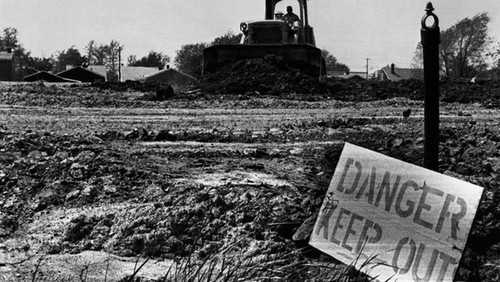
Love canal is located in the neighborhood of Niagara fall, New York. People living around Love Canal witnessed in the increase public health problems In the late 1970s, unaware of disposal of 22,000 barrels of toxic waste. Numerous families were displaced from their houses, which had been contaminated with chemicals and toxic waste. Many of the families suffered several health issues with common problems of high red blood cell counts and indications of leukemia, which certainty caused a massive number of casualties.
5. Great Smog Of 1952
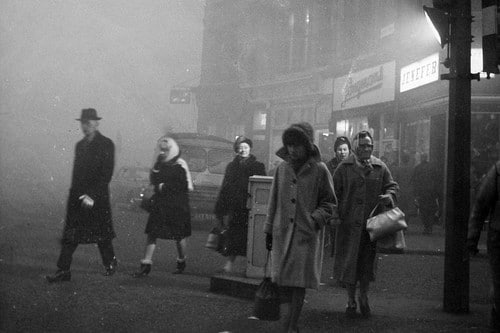
Great Smog of 1952 was a severe air-pollution event that affected London during December 1952. A period of cold weather, combined with an anticyclone and windless conditions, collected airborne pollutants, mostly arising from the use of coal to form a thick layer of smog over the city. It lasted from Friday 5 December to Tuesday 9 December 1952, and then dispersed quickly when the weather changed.
Government medical reports in the following weeks estimated that up until 8 December 4,000 people had died prematurely and 100,000 more were made ill because of the smog’s effects on the human respiratory tract . More recent research suggests that the total number of fatalities was considerably greater, at about 12,000.
4. Deepwater Horizon Oil Spill
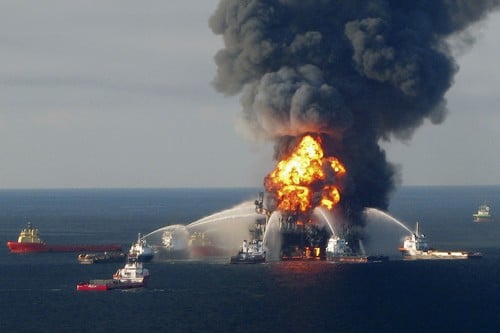
Deepwater Horizon oil spill also known as BP oil spill in the Gulf of Mexico on the BP -operated Macondo Prospect. Oil spill began after the accidental explosion and sinking of the Deepwater Horizon oil rig, a sea-floor oil gusher flowed for 87 days, until it was capped on July 15, 2010. Eleven people went missing and were never found. It is considered the largest accidental marine oil spill in the history of the petroleum industry. The oil spill is known as one of the most devastating man made disasters that effected nature for worse. Large scale marine life was destroyed, and never recovered.
3. Minamata Disease
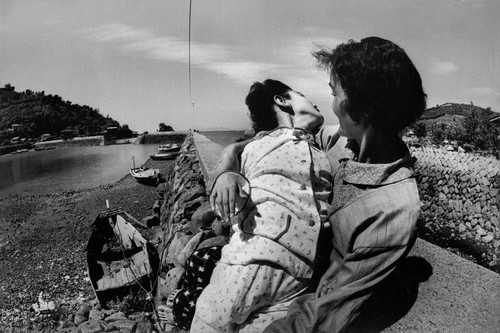
Minamata disease is an neurological syndrome caused by severe mercury poisoning. It causes ataxia, numbness in the hands and feet, general muscle weakness, loss of peripheral vision, and damage to hearing and speech . In extreme cases, insanity, paralysis, coma, and death follow within weeks of the onset of symptoms. Minamata disease was first discovered in Minamata city in Kumamoto prefecture, Japan, in 1956. The disease was caused by the release of methylmercury in the industrial wastewater from the Chisso Corporation’s chemical factory, which continued from 1932 to 1968. This highly toxic chemical bioaccumulated in shellfish and fish in Minamata Bay and the Shiranui Sea, which, when eaten by the local populace, resulted in mercury poisoning. While cat, dog, pig, and human deaths continued for 36 years, the government and company did little to prevent the pollution.
As of March 2001, 2,265 victims had been officially recognised as having Minamata disease (1,784 of whom had died) and over 10,000 had received financial compensation from Chisso.
2. Chernobyl Accident
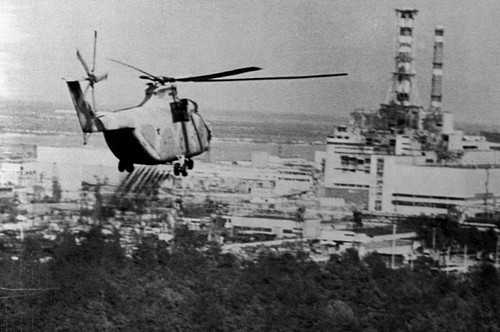
The Chernobyl disaster was a catastrophic nuclear accident that occurred on 26 April 1986 at the Chernobyl Nuclear Power Plant in the city of Pripyat, then located in the Ukrainian Soviet Socialist Republic of the Soviet Union (USSR). An explosion and fire released large quantities of radioactive particles into the atmosphere, which spread over much of the western USSR and Europe.
The Chernobyl disaster was the worst nuclear power plant accident in history in terms of cost and casualties. The struggle to contain the contamination and avert a greater catastrophe ultimately involved over 500,000 workers and cost an estimated 18 billion rubles. During the accident itself, 31 people died , and long-term effects such as cancers are still being investigated.
1. Bhopal Gas Tragedy
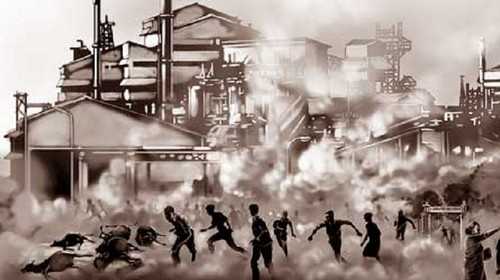
The Bhopal disaster, also known as the Bhopal gas tragedy, was a gas leak incident in India, and is considered as the world’s worst industrial disaster of all time.
It occurred on the night of 2?3 December 1984 at the Union Carbide India Limited (UCIL) pesticide plant in Bhopal, Madhya Pradesh. Over 500,000 people were exposed to methyl isocyanate (MIC) gas and other chemicals. The toxic substance made its way into the shanty towns located near the plant. The official immediate death toll was declared to be 2,259. The government of Madhya Pradesh confirmed a total of 3,787 deaths related to the gas release.
A government affidavit in 2006 stated that the leak caused 558,125 injuries, including 38,478 temporary partial injuries and approximately 3,900 severely and permanently disabling injuries. Others estimate that 8,000 died within two weeks, and another 8,000 or more have since died from gas-related diseases. The Bhopal gas tragedy was terrible accident, and its soul cringing outcomes will not fade from the memories of people anytime soon.
Written By: Khizar Hasan

